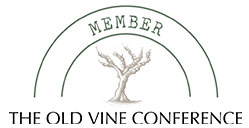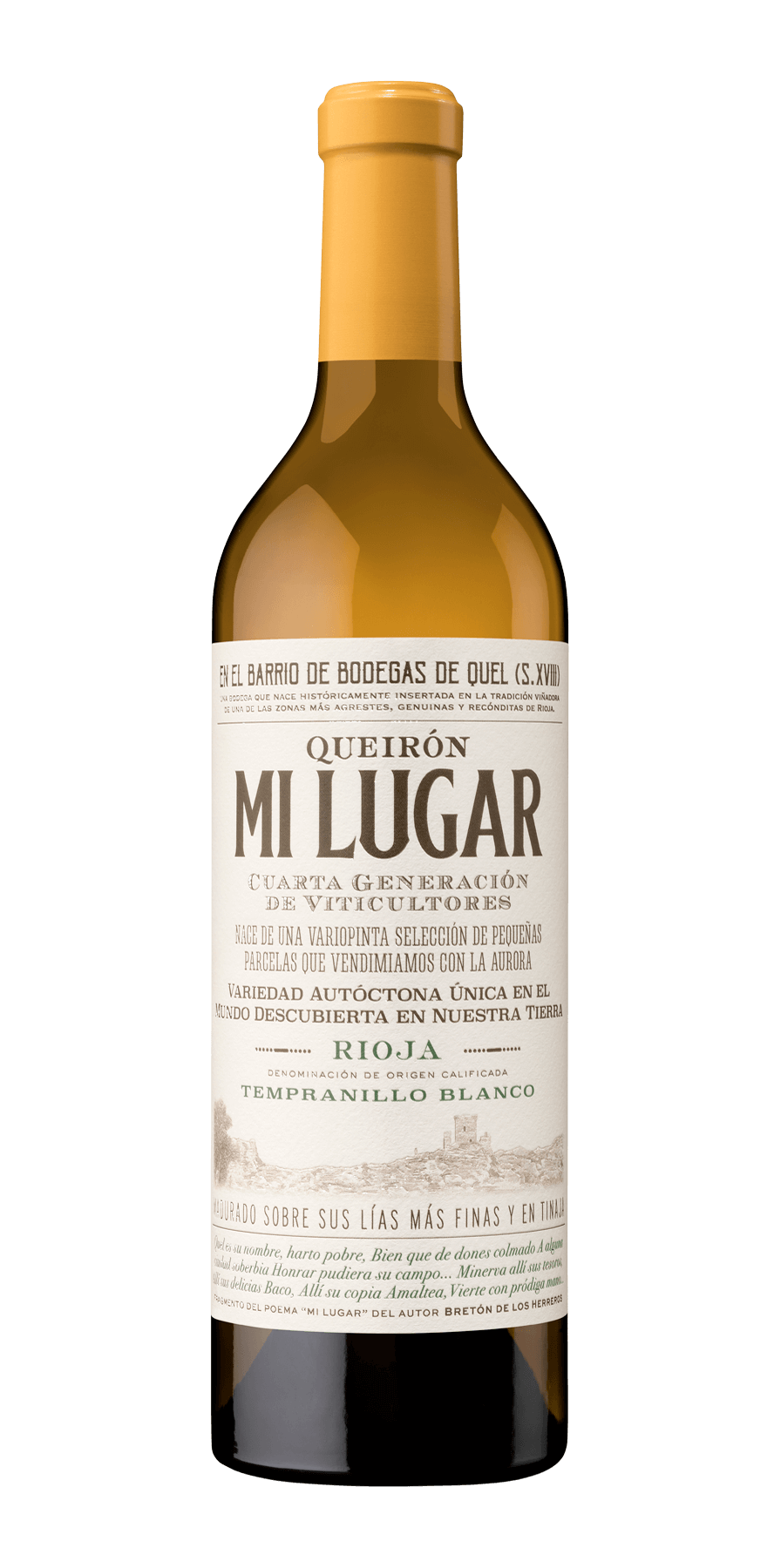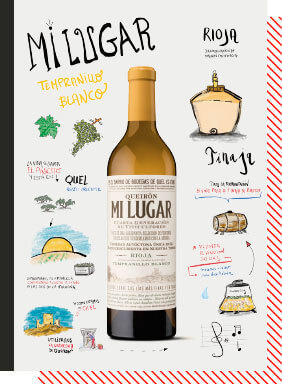The first
white wine in the Queirón cataloge
Inspired by Ensayos Capitales nº2
There is no better thing than dreaming about things for these to become reality. And the fact is that Mi Lugar Tempranillo Blanco, the first white wine in the Queirón catalogue –the newest Quel bodega of the Ontañón Family- is born out of a coming together of dreams and wishes: a unique variety found nowhere else in the world, indigenous and exclusive to Rioja, an almost uncharted territory in the heart of one of the wine regions with the longest tradition on the planet, and the natural progression of the wine which started off this adventure: Queirón Ensayos Capitales Nº2 ‘Lágrima en Tinaja’, the second “movement” in the ephemeral, innovative output of this bodega which has served as the inspiration and basis for Mi Lugar Tempranillo Blanco.
The Ensayos Capitales project, a testing ground and a minefield of exciting challenges for Queirón, is based on the production of ephemeral wines which belong to the sphere of innovation, wines which are born and die with their own vintages, but which open up opportunities and shape our winery’s most innovative range. Ensayos Capitales Nº2 ‘Lágrima en Tinaja’ 2019, the second wine in the collection, was the first Queirón white wine and the pioneer of this adventure. Moreover, it is based on a very special variety, exclusive to Rioja and unique in the world: tempranillo blanco, the natural mutation of the tempranillo vine, discovered at the end of the last century in a village in the Rioja Oriental zone. We used a very unusual vinification process, with the first part of the fermentation in stainless steel vats and finishing up in the cask. And afterwards, with just the free run must, rounded off in an earthenware vessel.
Ensayos Capitales Nº2 ‘Lágrima en Tinaja’ 2019 was launched with 3,126 bottles and an exhaustive selection of grapes from the El Aniceto vineyard, a plot of sandy-loam soil on the Quel slopes of the Sierra de Yerga, at an altitude of over 600 metres. Now, thanks to the path it has opened up, Mi Lugar Tempranillo Blanco 2021 has been launched, after applying all we have learned thanks to the Ensayos Capitales project.
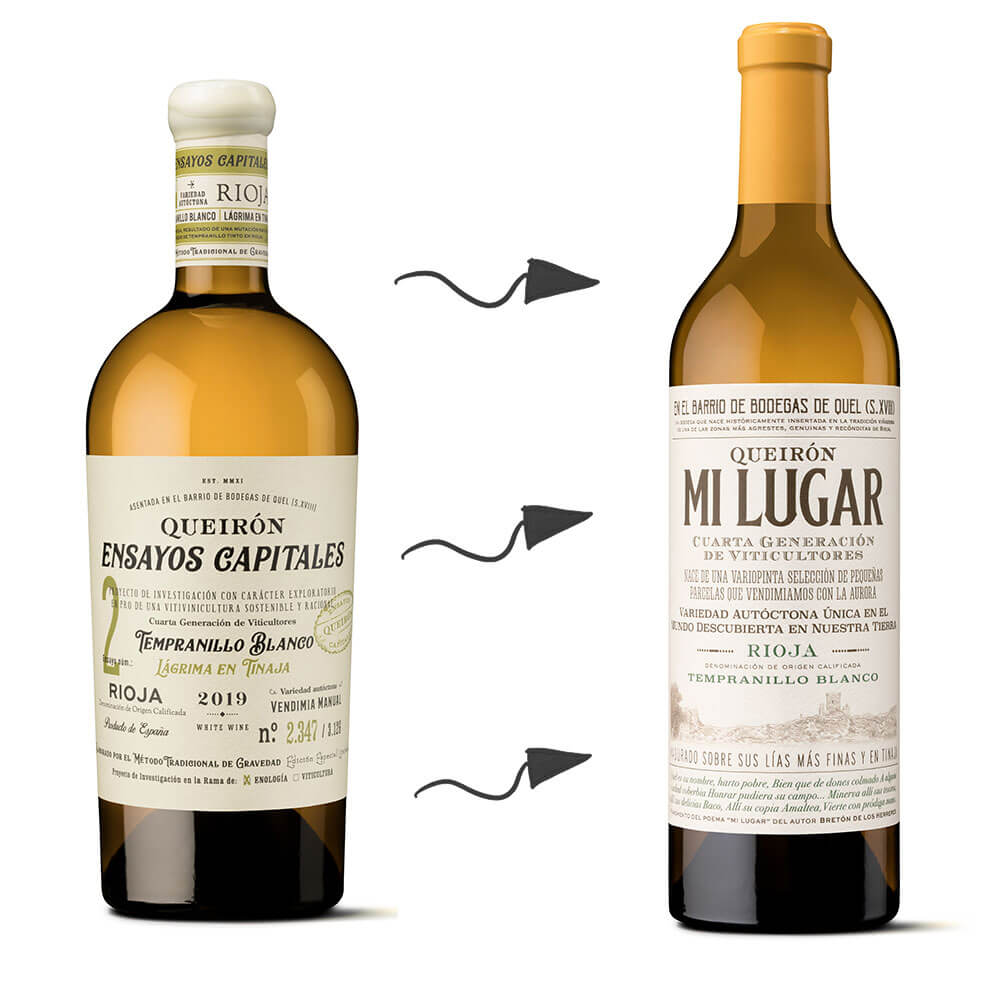
The variety
Tempranillo blanco / unique in the world / exclusive to Rioja.
The tempranillo blanco variety is a symbol of the identity of Rioja because it is exclusive to our appellation. In 1989 a grower from Murillo de Río Leza (a village in the Rioja Oriental) named Jesús Galilea discovered a white spur on an old red tempranillo vine. He pruned the mutant cluster and this was the start of the birth of a 100% Riojan variety which in 2008 was added to the catalogue of varieties of the DOCa Rioja. From the buds of the mutant cane, a variety was produced which allows the production of white wines with huge oenological potential and which are nowadays already spread over an area of nearly 800 hectares in the Rioja appellation. A group of researchers from the Instituto de Ciencias de la Vid y del Vino (ICVV) identified the cause of this mutation and are engaged in a complex reorganisation of the plant’s genome which follows patterns typical of a process of chromothripsis.
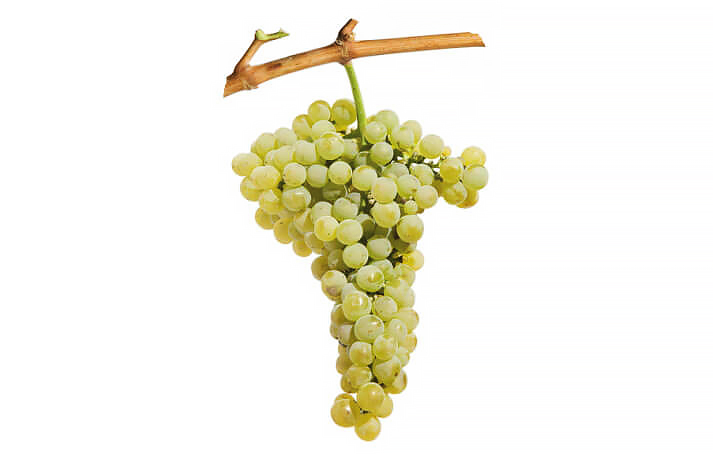
Racimo de tempranillo blanco, variedad que en 2008 se incorporó al catálogo del Consejo Regulador.
Racimo de tempranillo blanco en la cepa original de la mutación, propiedad del viticultor Jesús Galilea, de Murillo de Río Leza.

After checking the stability of the features of the young vine species, that is, that the mutation had not reverted, the vine multiplied until it reached a hundred plants for the study of its behaviour in winemaking and its commercial possibilities. With the arrival of the new century, the sole existing clone of tempranillo blanco –there is no inter-varietal heterogeneity as in the case of its red sister grape – had continued to grow. Thus, between the years 2000 and 2001, the C.I.D.A. planted a hectare in the estate of La Grajera, in Logroño. Thus the new tempranillo blanco variety was legally born, since those responsible for the project had identified up to 104 features of the OIV descriptor list for grape varieties and Vitis species.
Tasting notes
Colour: Bright, clear straw-yellow with golden glints. It has dense tears.
Aroma:Very intense aromas. Very elegant and complex. The first aromatic sensation is of notes of white blossom, fennel, thyme and a strong presence of fruit, with honeyed nuances, such as apricot, peach, plums and even dried apricots. There is also a surprising,
more intense part with sensations of pineapple and passion fruit, as well as subtle reminders of pastries, almonds and even toasted bread. At a third level you discover hints of clove and even tobacco.
Taste: Here we are confronted by a wine with very well-balanced tannin and acidity. It is also lively, with a lot of body and volume. Moreover, its light tannin sensation means it has greater length. It is very pleasant on the palate. In the retronasal phase the honeyed fruit reappears with the tertiary notes of clove and tobacco.
vintage
Technical data
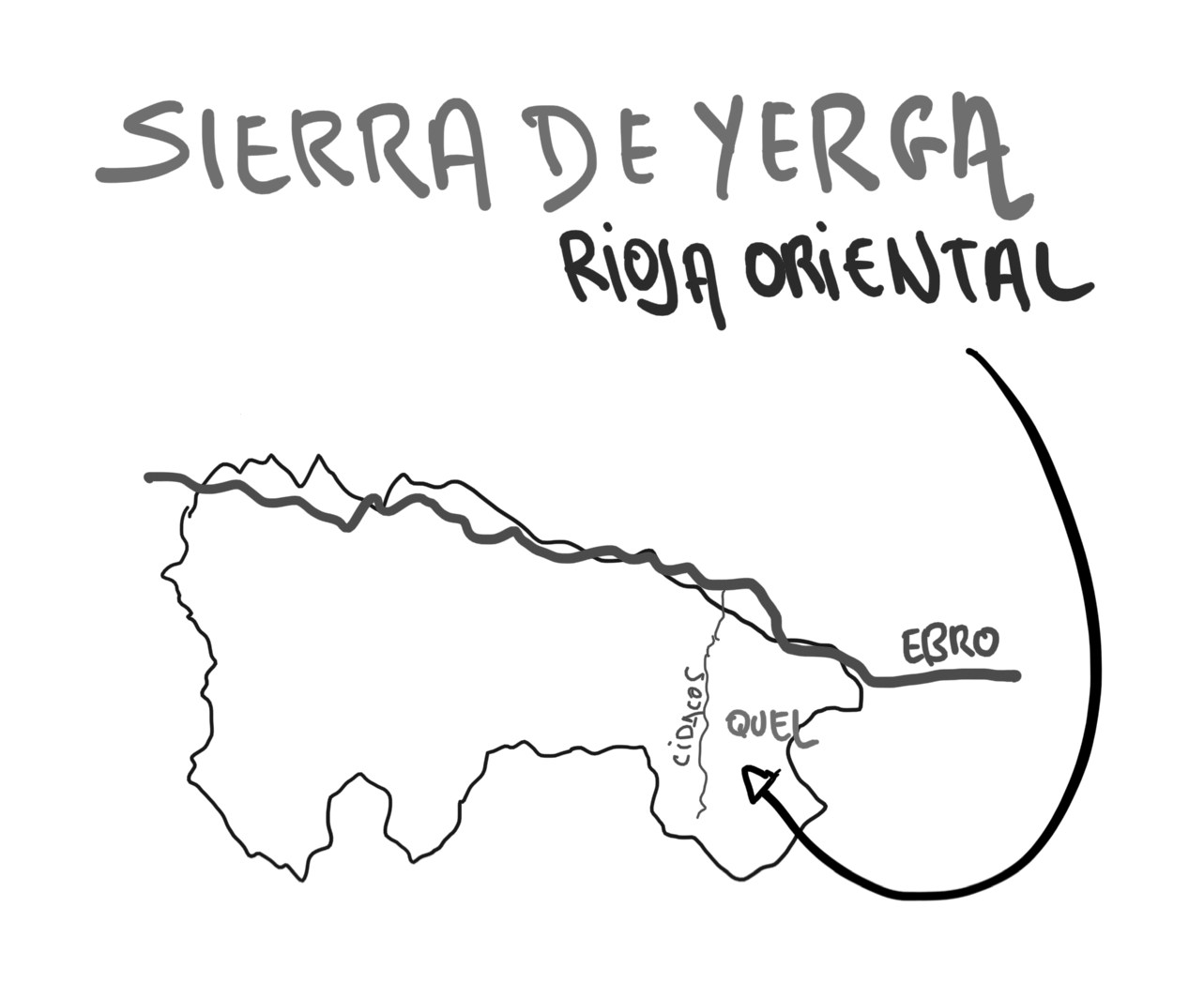
Situación de Quel en la subzona de Rioja Oriental.
The vineyard
El Aniceto
/ Tempranillo blanco from the Sierra de Yerga.
We are confronted by one of the Ontañón Family vineyards in Quel, in the spaces which climb up the slopes of the Pico Gatún in the heart of the Sierra de Yerga. This vineyard, located in the district of la Encina sits at an altitude of around 640 metres and is the zone selected by Queirón for the bodega’s white grape varieties.
This vineyard, made up of various small plots, has very special characteristics. It sits on a plateau perched between the mountain spurs, gullies and run-offs so typical of these spots, which is perfect for achieving very slow, gradual ripening of the grapes. We achieve greater aromatic concentration as a result of this more parsimonious ripening. This process to achieve the ripeness we are seeking means that the harvest is much later than the norm for white grapes in Rioja, since we usually pick the grapes in the last week in September or even the first in October. It is ripening at a slow simmer which allows us to achieve greater aromatic concentration. If the end of the growing cycle is hot, it will offer us fruitier, honeyed aromas and when the cycle is cooler, we will find more floral sensations and even white-fleshed fruit.
As is normal in the Quel district, the soil of El Aniceto is very poor, with a presence of clay, sand and loam. El Aniceto is also worthy of note for its extraordinary natural ventilation, which protects it from disease, especially in the latter stages of the cycle and in particular, during ripening.
The scrubland setting, with a profusion of aromatic herbs and extreme biodiversity, with the presence of other crops such as olive, almond, plum and cherry trees, brings a very special fragrance to the zone and gives our tempranillo blanco a very special character.
.
Viñedo El Aniceto
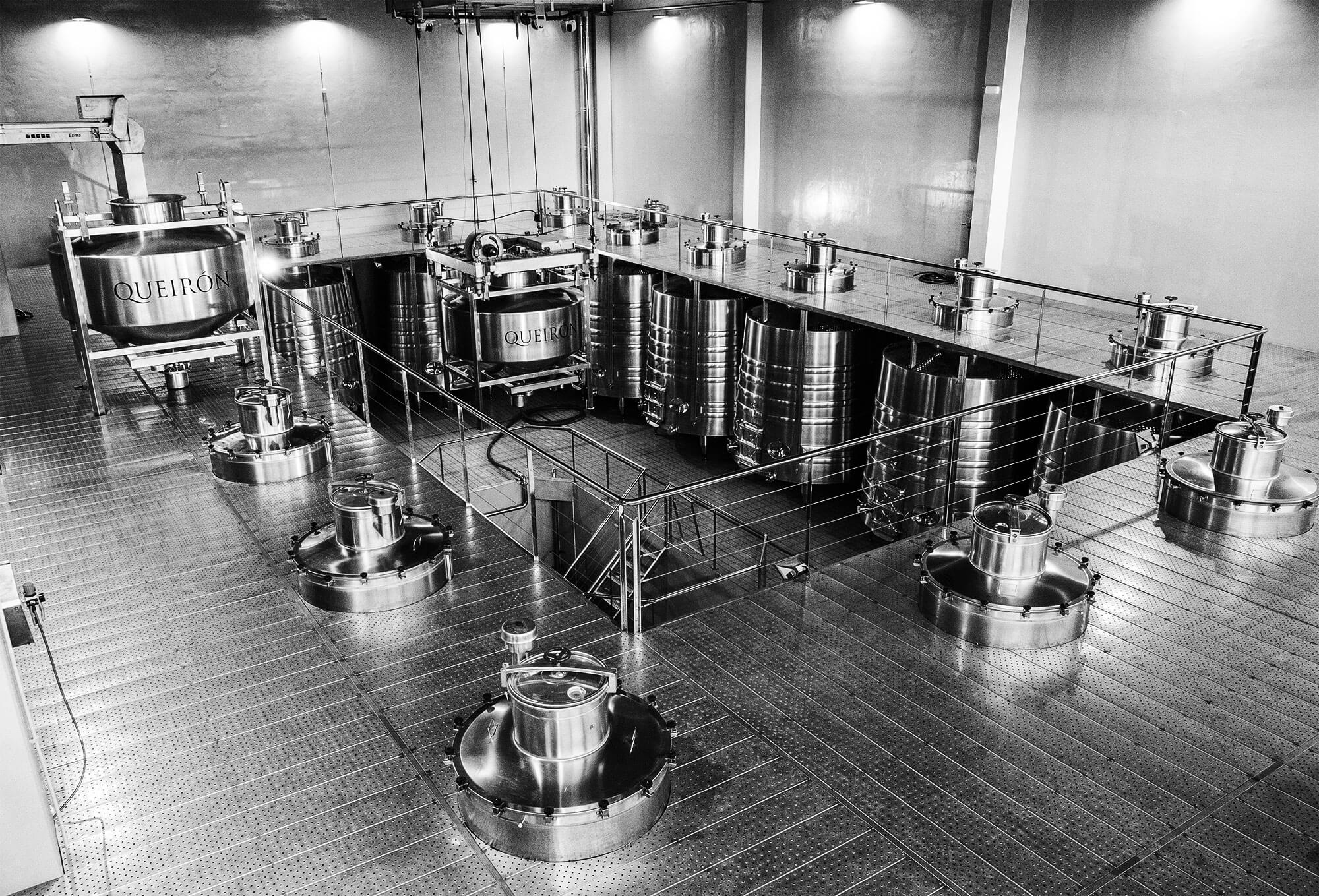
Sala de elaboración de Queirón, en la que la gravedad juega un papel esencial.
Elaboration
The virtue of this variety, which Ontañón Family has backed, is the possibility it offers for finding an extraordinary point of concentration in the body, the volume and the rest of the features it brings us in the mouth. Its most limited aspect is its aromas. However, we can improve these by working with different temperatures to increase the aromatic potential and thus obtain much finer and more subtle sensations on the nose. In the Mi Lugar Tempranillo Blanco we used this vinification process with different temperatures in the various stages of fermentation and we managed to strengthen the aromatic flow towards the finesse, complexity and elegance of the sensations on the nose.
The challenge of the aromas
Symphony of temperatures
Reception of harvest / temperature 12 ºC
One of the primordial questions in making white wines is the healthy condition of the grapes and the absolutely perfect way of receiving the grapes in the bodega. Picking is by hand into crates and by night. The coolness of the night will guarantee that we receive the harvested grapes in optimum conditions. We begin at around five in the morning and, so as to keep the grapes at the ideal temperature we require, dry ice is used in the crates into which the grapes are placed after picking. This action protects the clusters from bacteria and other contamination and also means that the grapes reach the winery at below 12 °C. We are also careful to protect the oxidative phase of the white grapes in the first moments before vatting.
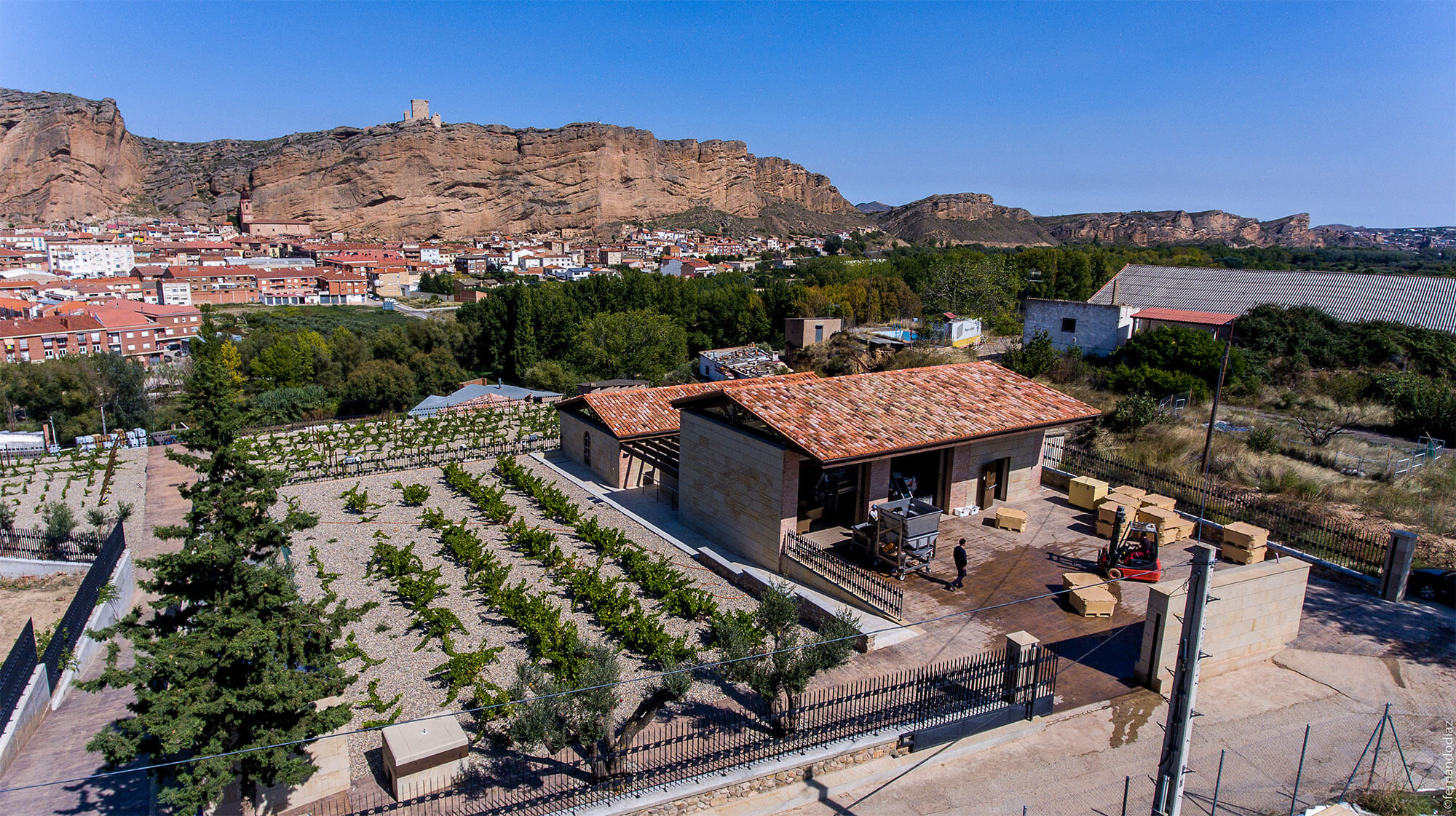
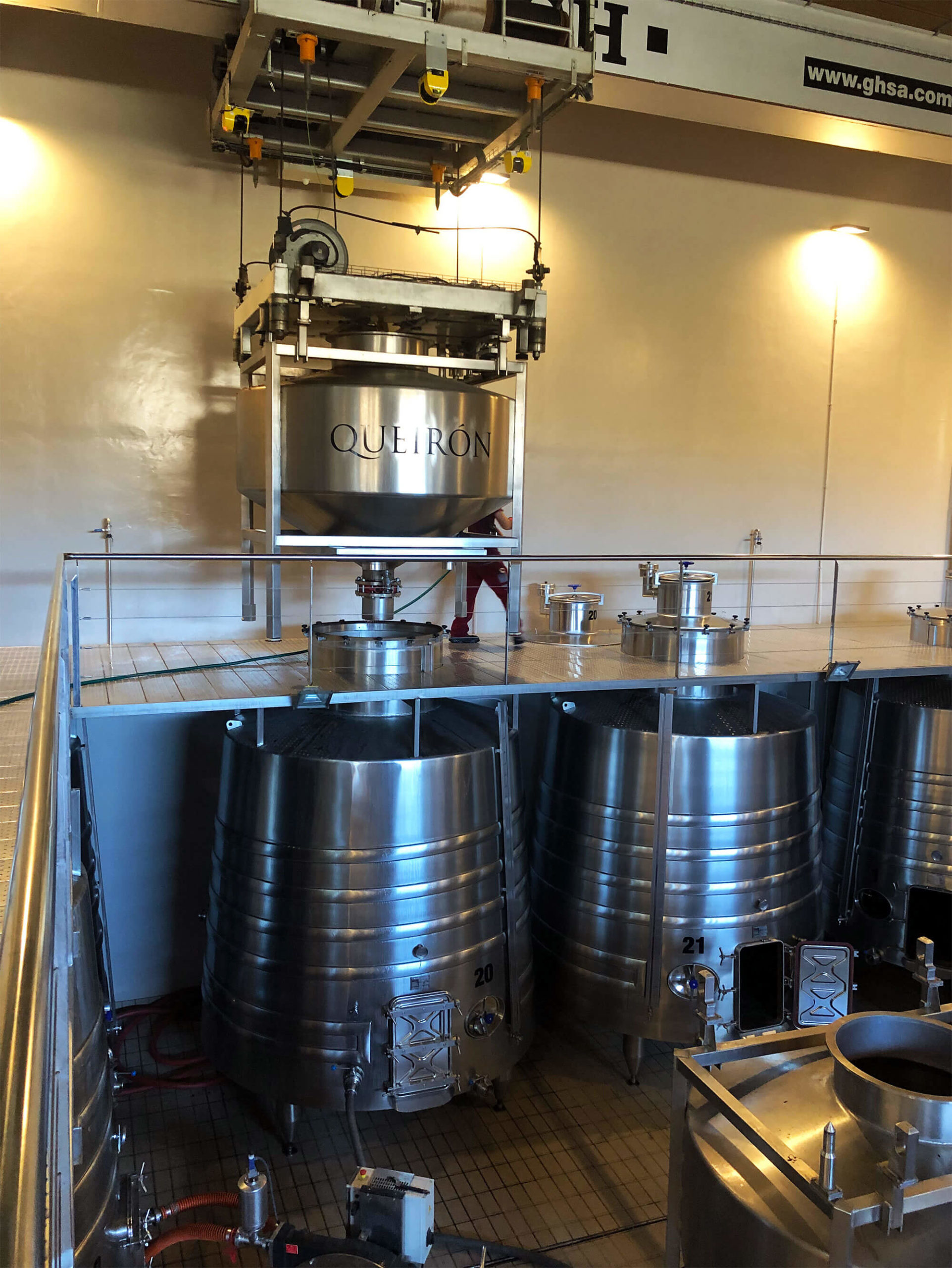
Homogenisation
/ temperature 7 °C
The clusters are destemmed and placed in stainless steel tanks which have also previously been protected with dry ice. The first thing we do is to lower the temperature of the grapes and first must which ooze out at seven degrees, thanks to the dry ice itself and the temperature control systems of our vats.
We do not seek to have prefermentative maceration, but we do keep the vat at this temperature for a day to ensure that all the parts are at the same temperature. We also stir to further ensure this homogenisation. The aim is to achieve an even temperature of 7 °C throughout the vat.
Fermentation with skins.
/ temperature 14 °C (second week)
After maintaining a temperature of 7 degrees centigrade for 24 hours, the temperature is allowed to rise and the fermentation process begins. The temperature is controlled until it reaches 14 °C. This process takes two days and is achieved using indigenous yeasts from the vineyard itself. In the matter of yeasts, in Ontañón Family we always work with our own yeasts from our own most special vineyards. In this way we contribute to showcasing the identity of our territory and also improve the innate characteristics of our vineyards and wines.
During fermentation, we keep the must with the skins for seven days, in the same way that we ferment red wines. Consequently, there is a transfer of aromas and colour. To ensure we do not have any contamination in the upper part of the tank, we stir (twice per day) to keep the skins suspended in the must without forming the traditional cap.
Fermentation without skins.
/ temperature 16 °C (second week)
And this is one of the keys to this wine which we learned thanks to Ensayos Capitales N° 2: at the density of 1050 the moment comes for the skins to be separated from the liquid part (partially fermented free-run must), which from this point will undergo the typical white wine fermentation in the vat with no skins at a temperature of 16 °C for a week.
Culmination of the fermentation in 500 litre, French-oak barrels
/(third and fourth week)
When the density reaches 1005, the fermentation ceases in the 500 litre, French-oak barrels. In this final phase of the fermentation in the barrel, the wine spends two weeks. Once alcoholic fermentation is complete, the wine is racked out of the barrels to separate it from the coarser lees.
/ Lees ageing in the cask and amphorae
One part of the wine (85 per cent) remains for six months in 500 litre, French-oak barrels. The rest of the wine (15 per cent) undergoes ageing in an amphora for six months.
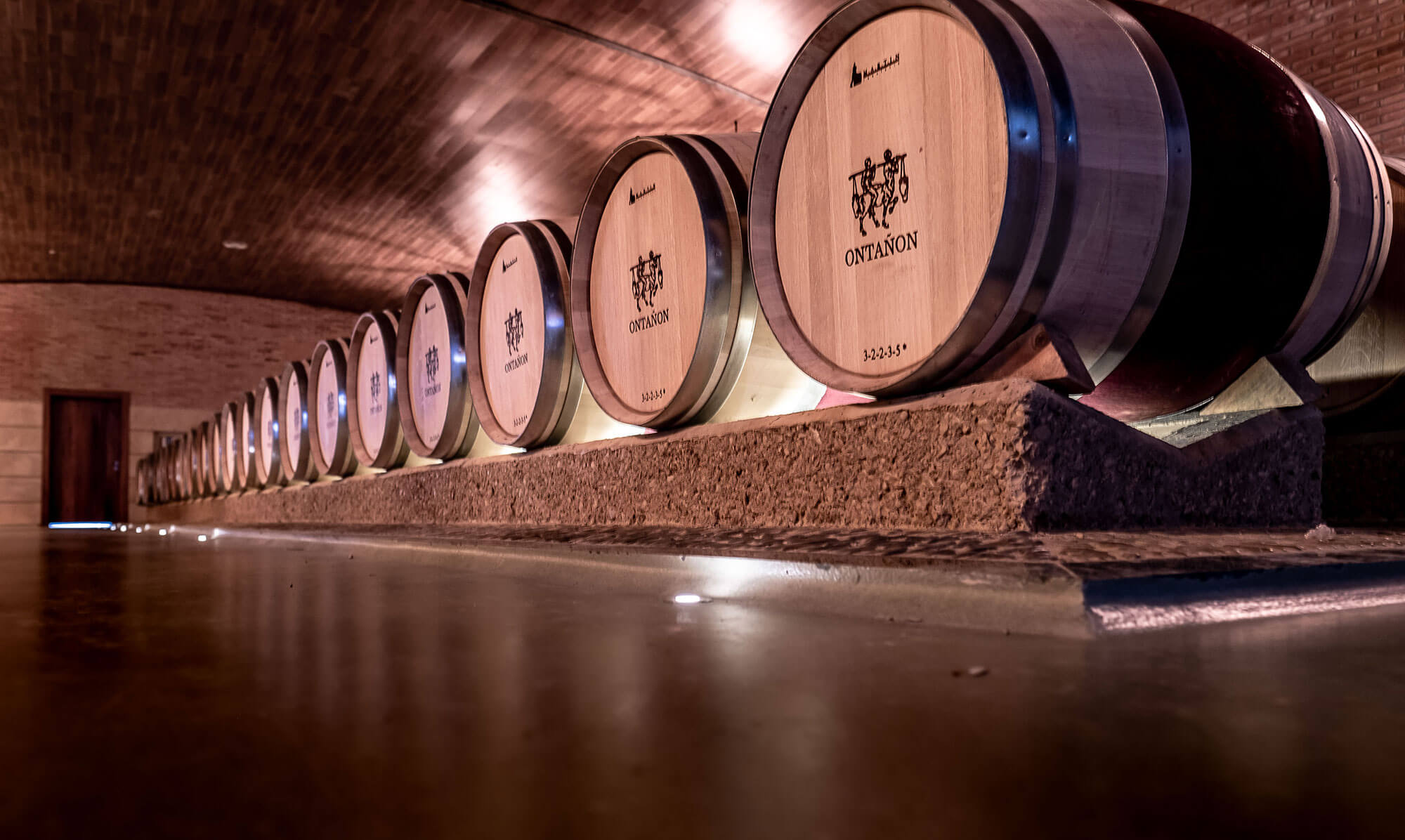
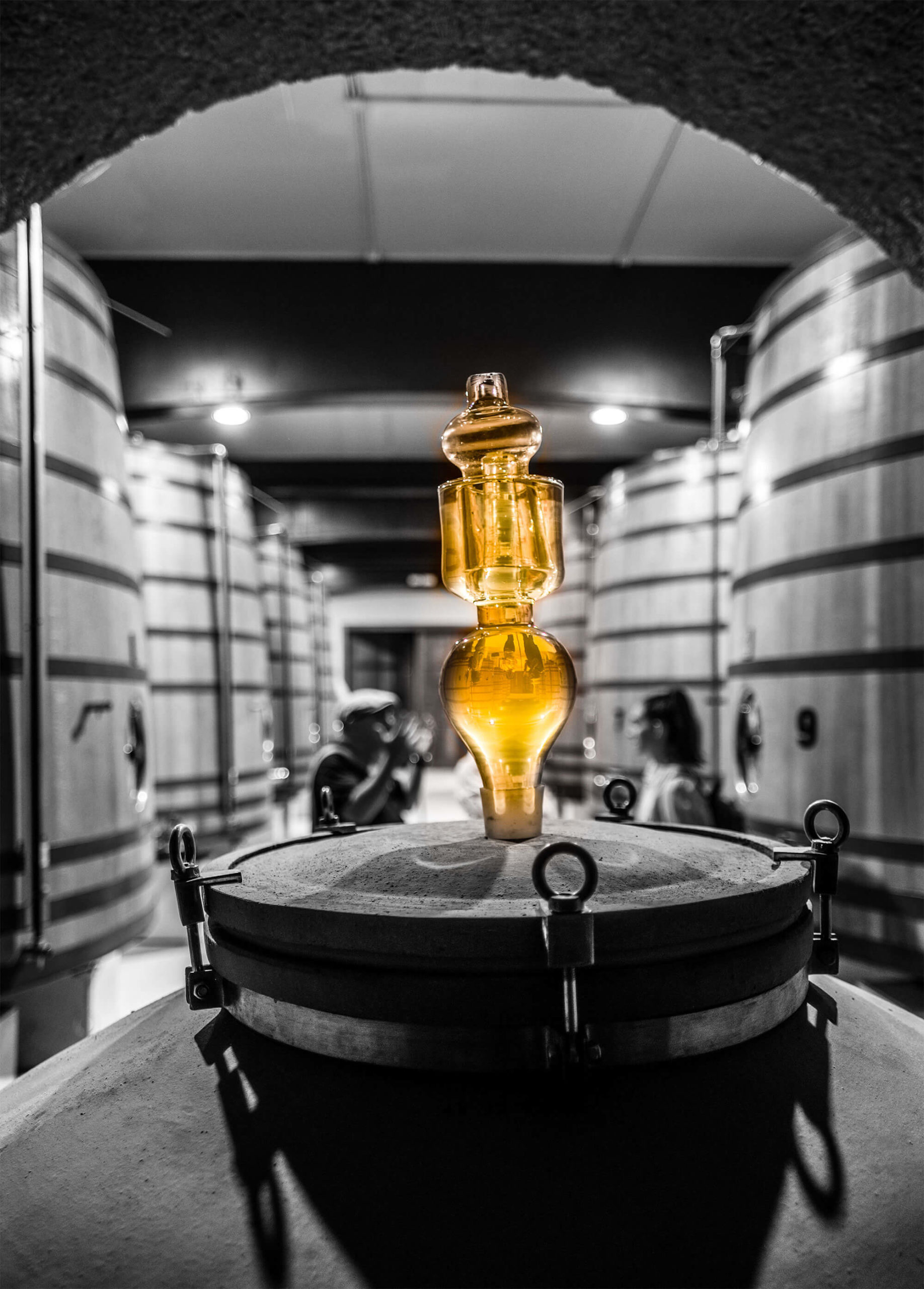
Ageing in 500 litre, French-oak barrels for six months
Starting from the basis that a white wine requires half the contact with the Wood of a red wine in its ageing process. This is due to the absence of anthocyanins. But we do have the tannins from the wood. We use ageing in 500 litre barrels because the ratio of contact between the wood of the French barrel and the wine is half. We use very gentle, light toasts and even untoasted oak (with sterilized wood). What we get from this is volume, sweetness and smoothness, which with the lees ageing ensures that the body the wine will achieve is greater, with a more enveloping, oilier character. Moreover, it is very important for the lees to be in suspension during this process, hence the stirring. This is because bonds are created with the molecules of the wine which increase the wine’s volume.
Ageing in barrels
The chain of lees stirring in the barrel
- In the first month, daily stirring.
- During the second and third months, stirred two / three times per week.
- Fourth, fifth and sixth months, stirred once per week.
Peculiarities of ageing in 500 litre barrels
- Volume and oiliness as a result of ageing on the lees.
- Aromatic intensity.
- Stability from the microoxygenisation in the wine.
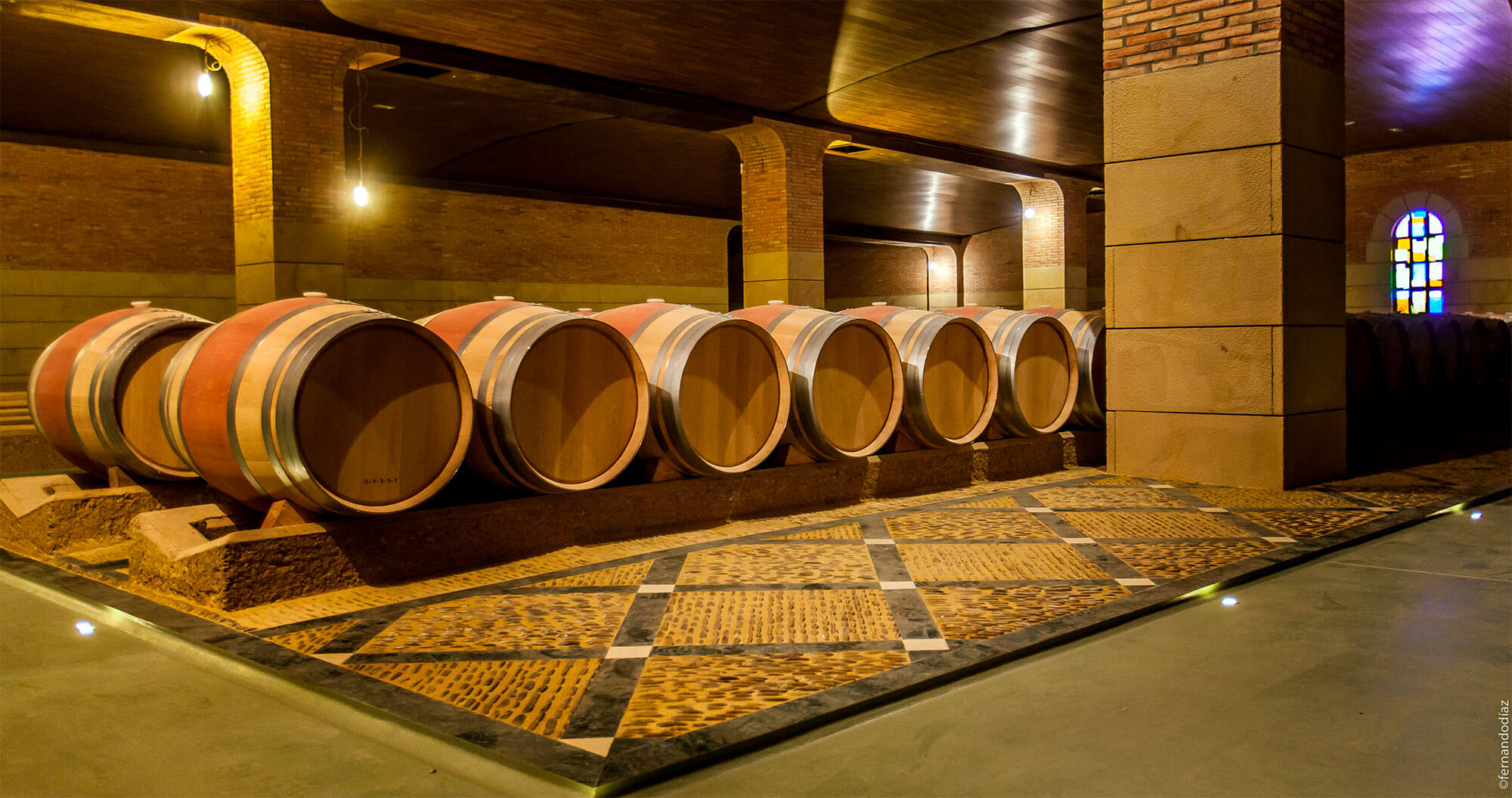
Ageing in an amphora
Peculiarities of ageing in stoneware amphorae
- Identity and respect for the variety.
- Balance.
- Settles the wine through the slow movement of the wine during its time in the amphora.
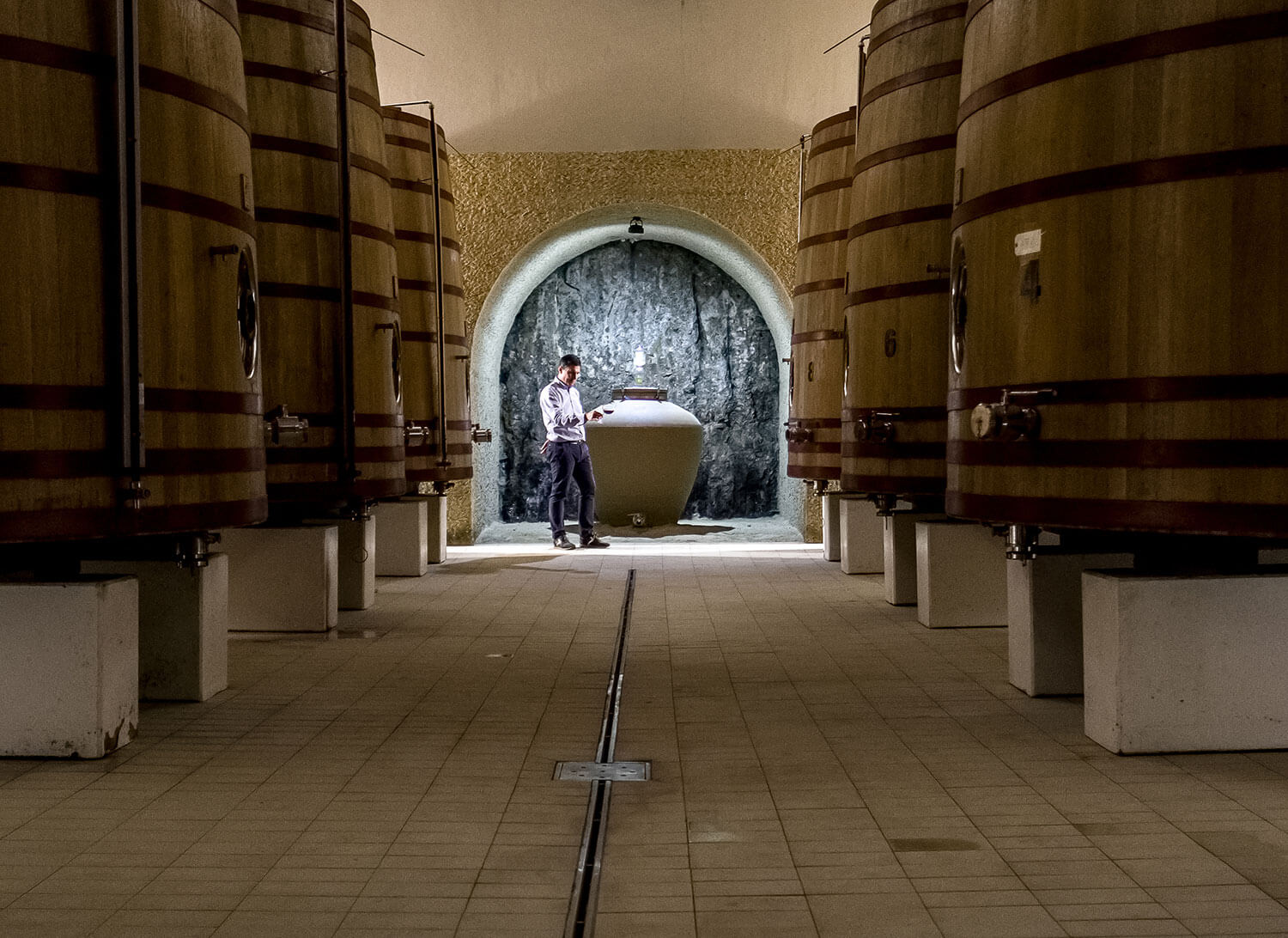
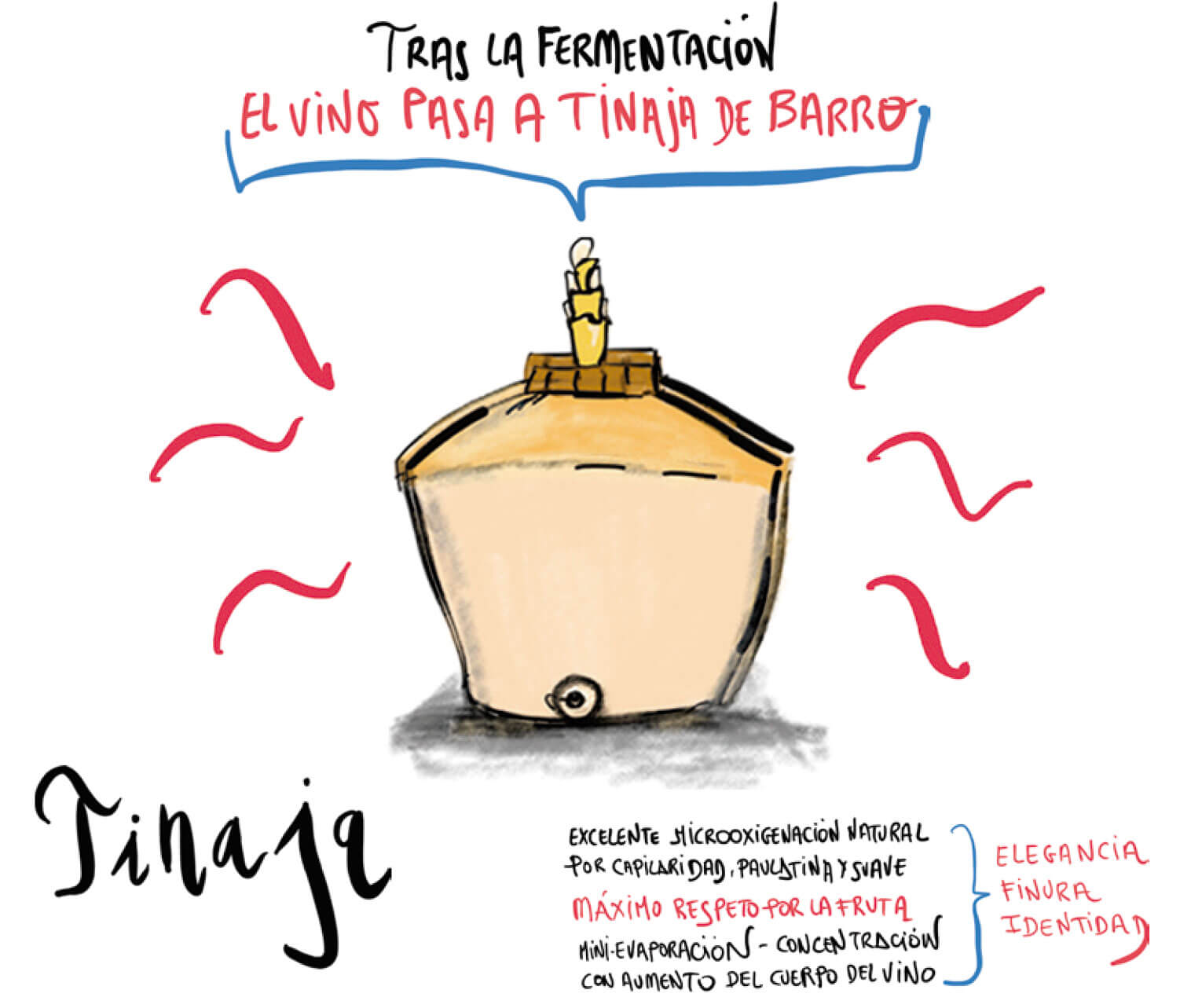
Ageing in an amphora for six months
Since time immemorial, the first ageing processes in the world of wine were in amphorae or earthenware vessels. In the case of the Mi Lugar Blanco wine from Queirón, we work with stoneware amphorae (the Spanish word derives from the French ‘grès’, which means sandstone. It is a ceramic paste made of clay, materials such as silica and smelters like feldspar. Its main features are its hardness and its low water absorption once baked at its temperature of vitreous sintering and limited porosity).
The amphorae made of this stoneware offer very special microoxygenisation for the wine because of the character of its pores. What happens with the wine is that due to the dynamic of the fluids and the special shape of this vessel, a series of movements of all the liquid are caused inside so that the lees are always in suspension and in flows in time with the wine itself. It favours an exchange and also the stabilisation of the wine.
Mi Lugar
2019
The allegory of Quel
El Arca
2020
An ancestral journey
Queirón de Gabriel
2011
Gabriel´s dream
Ensayos Capitales
2018
Challenging the limits
Ensayos Capitales Nº3
2020
Asoleao
